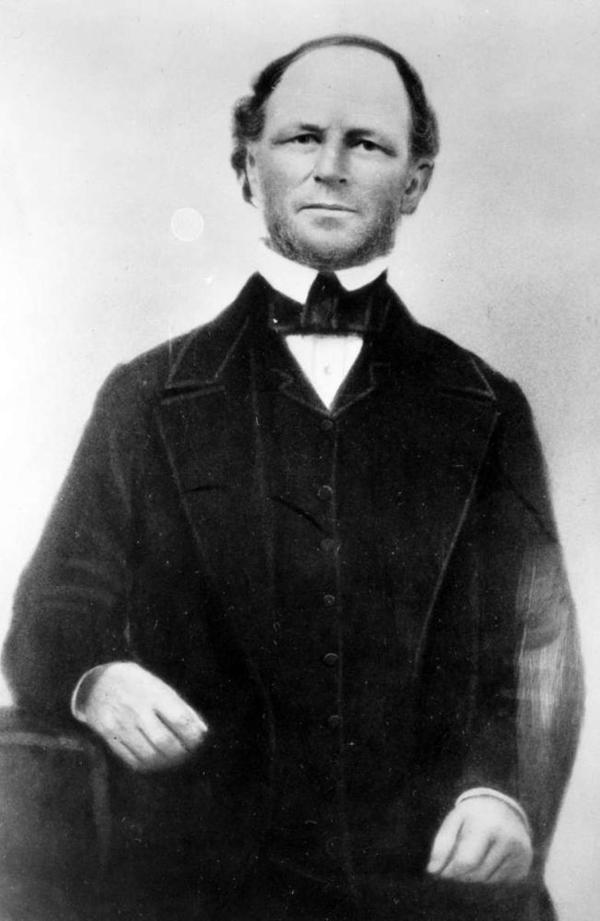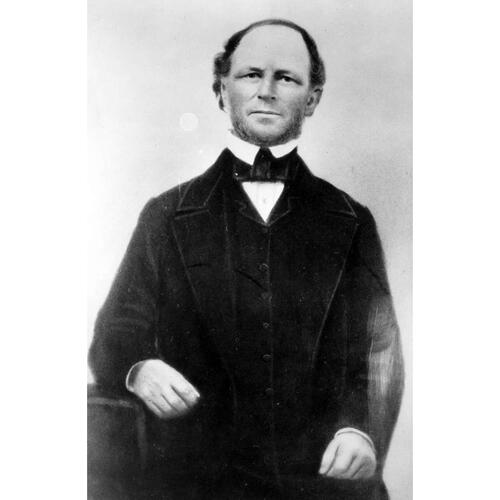
Source: Link
YALE, JAMES MURRAY, HBC chief trader; b. c. 1798 at Lachine, L.C.; d. at Saanich, near Victoria, B.C., on 7 May 1871.
James Murray Yale entered the service of the Hudson’s Bay Company in 1815 and was first stationed at Fort Wedderburn on Lake Athabasca. This post had just been built by John Clarke* in an effort to secure a foothold for the HBC in Athabasca, the great stronghold of the North West Company. It was subjected to constant harassment by the NWC’s large staff at nearby Fort Chipewyan. Violence reached a climax when Archibald Norman McLeod was in charge there; Clarke was twice arrested and Yale himself was seized in April 1817, taken to Great Slave Lake, and detained there until the autumn. In 1818 he was with Joshua Halcro when he built Colvile House on the Peace River for the HBC.
In 1821 Yale was put in charge of Fort George on the Fraser River, and he spent the rest of his long career west of the Rocky Mountains. He was at Fort George until 1824, and later served at Fort Alexandria and at Fort St James. Unwell in 1827, he was sent to Fort Vancouver where medical attention was available. A year later he was back at Fort St James and there met Governor George Simpson*, who was on an inspection trip and was anxious to explore the Fraser River as a possible transport route to the coast. Yale accompanied him, and while Simpson travelled overland to Kamloops and returned to the Fraser down the Thompson River, Yale explored the Fraser itself from Alexandria to the mouth of the Thompson. From there he went through the main canyon of the Fraser with Simpson on a trip that was rivalled only by that of Simon Fraser* in 1808.
Yale left the party at Fort Langley, where he was to spend more than 30 years. After serving under James McMillan*, who had founded the post, and Archibald McDonald*, Yale was placed in charge of Fort Langley in 1833. In 1839 he supervised the construction of new buildings about two and a half miles upstream from the original site. These were burned in April 1840, and Yale had to rebuild the post a second time. He was appointed chief trader in 1844. Although never a chief factor he was well regarded by the company, and Fort Yale, built upstream from Fort Langley in 1848, was named after him.
By this time very few furs were being traded at Fort Langley, but Yale fought successfully against any proposal that it should be abandoned and he developed other resources that justified its continued existence. He was a pioneer in the packing of salt fish on the Fraser; his first efforts were made soon after 1830, and in 1850 some 2,000 barrels of salmon were packed at the fort. Yale also developed much the largest farms then existing on the mainland of what is now British Columbia. The crops included grain, potatoes, and vegetables; much of the produce was sent to the posts of the Russian American Company in Alaska, under the terms of its trading agreement with the HBC. Yale’s chief assistant at Fort Langley for many years was Ovid Allard who later was in charge for a decade.
When the Fraser River gold rush erupted suddenly in the spring of 1858, Fort Langley was the only settlement on the lower river and it became a scene of great activity. It was intended at first to locate the capital of the new colony of British Columbia on the original site of Fort Langley, and the colony was proclaimed there on 19 Nov. 1858. The plan was abandoned in February in favour of New Westminster, but it had occasioned much turmoil and excitement with which Yale dealt competently. He retired in May 1859, and after a brief visit to Montreal settled on Stromness Farm, in Saanich, on Vancouver Island.
The name of Yale’s wife seems not to have been recorded. They had three daughters, one of whom married a son of Sir George Simpson. A much liked character, Yale was known as “Little Yale” because of his short stature about which he was sensitive. Chief Factor James Douglas, his superior in the HBC, a big man, took a quiet delight in standing near Yale and observing his discomfiture. In his famous “Character Book” Governor Simpson devoted an entry to Yale: “A sharp active well conducted very little man but full of fire with the courage of a Lion. Deficient in Education, but has a good deal of address & Management with Indians and notwithstanding his diminutive size is more feared and respected than some of our 6 feet men.”
HBC Arch. A.34/2. HBRS, I (Rich), 473–74; X (Rich). “Fort Langley correspondence,” ed. R. L. Reid, BCHQ, I (1937), 187–94. R. L. Reid, “Early days at old Fort Langley: economic beginnings in British Columbia,” BCHQ, I (1937), 71–85.
Cite This Article
W. Kaye Lamb, “YALE, JAMES MURRAY,” in Dictionary of Canadian Biography, vol. 10, University of Toronto/Université Laval, 2003–, accessed April 2, 2025, https://www.biographi.ca/en/bio/yale_james_murray_10E.html.
The citation above shows the format for footnotes and endnotes according to the Chicago manual of style (16th edition). Information to be used in other citation formats:
| Permalink: | https://www.biographi.ca/en/bio/yale_james_murray_10E.html |
| Author of Article: | W. Kaye Lamb |
| Title of Article: | YALE, JAMES MURRAY |
| Publication Name: | Dictionary of Canadian Biography, vol. 10 |
| Publisher: | University of Toronto/Université Laval |
| Year of revision: | 1972 |
| Access Date: | April 2, 2025 |



